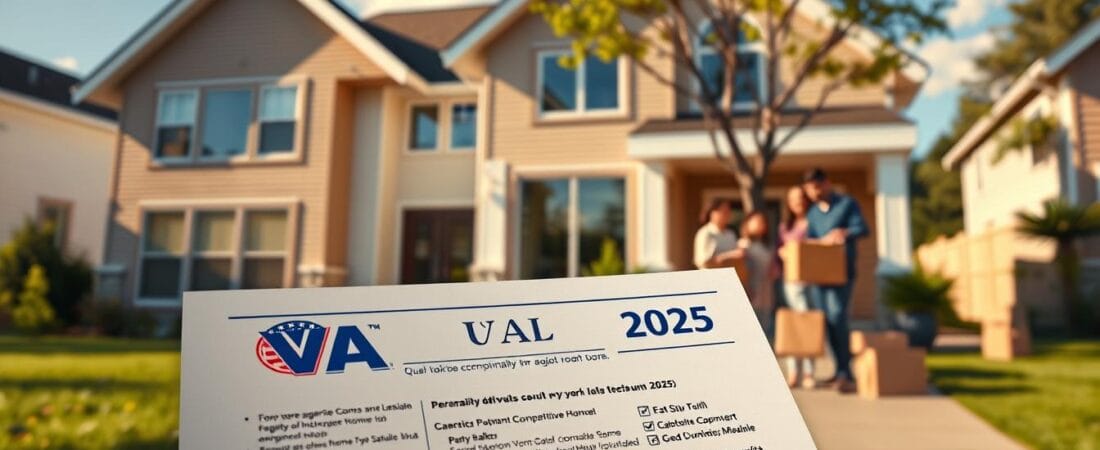In 2024, the U.S. government guaranteed over $155 billion in loans for veterans, showcasing the program’s robust growth and reliability. This trend is set to continue in 2025, with significant updates that expand opportunities for qualified individuals. The standard loan limit will increase by 5.2%, reaching $806,500, while high-cost counties will see limits as high as $1.21 million.
These changes aim to enhance purchasing power for veterans, making homeownership more accessible. Unlike other programs, this entitlement has no expiration, ensuring long-term benefits for eligible individuals. Additionally, features like no down payment and flexible refinancing options provide strategic advantages for those looking to secure their financial future.
For those exploring financial planning tools, consider low-fee robo-advisors to complement your home financing strategy. These tools can help manage investments efficiently, aligning with your broader financial goals.
Key Takeaways
- 2025 brings a 5.2% increase in standard loan limits, reaching $806,500.
- High-cost counties will have loan limits of up to $1.21 million.
- No expiration on entitlement ensures long-term benefits for veterans.
- No down payment and flexible refinancing options are key advantages.
- Over $155 billion in loans were guaranteed in 2024, highlighting program reliability.
Understanding VA Loan Benefits in 2025

With over 416,000 loans issued in 2024, the program remains a cornerstone for veterans. This financing option is structured to provide accessibility and security for qualified individuals. Private lenders issue these loans, backed by a 25% government guarantee, reducing risk for both parties.
Eligibility requirements vary based on service history. Current service members need at least 90 days of active duty, while post-1980 veterans require 24 months of service. These tiers ensure that the program supports a wide range of individuals.
The program’s relevance is further highlighted by its 2024 performance, with an average loan amount of $373,291. This demonstrates its ability to meet diverse financial needs. Additionally, the entitlement does not expire, offering long-term benefits.
Occupancy rules require the property to be a primary residence, with exceptions for IRRRL refinancing. This contrasts with FHA and conventional options, which often have stricter requirements. For more details, review our terms and conditions.
Overview of VA Loan Program
The program’s structure ensures reduced upfront costs, making it an attractive option for home purchase. Private lenders handle the process, while the government provides guarantees.
Why VA Loans Are Attractive in 2025
Flexible eligibility and reduced financial barriers make this option stand out. Its continued growth and reliability ensure it remains a top choice for veterans.
Pros of VA Loans in 2025

Homeownership becomes more attainable with the unique features of this program in 2025. These advantages are tailored to reduce financial barriers and provide flexibility for qualified individuals. From eliminating upfront costs to offering multiple refinancing options, the benefits are designed to empower veterans and active service members.
No Down Payment Requirement
One of the most significant advantages is the elimination of a down payment. For a $175,000 home, this can save borrowers over $8,750 compared to conventional options requiring 5% down. This feature makes homeownership accessible to more individuals, especially those with limited savings.
No Private Mortgage Insurance (PMI)
Unlike FHA or conventional loans, this program exempts borrowers from PMI. This can save veterans approximately $30 to $70 per month, reducing monthly expenses significantly.
Higher Allowable Debt-to-Income (DTI) Ratio
The program allows for a higher DTI ratio, with a benchmark of 41% and exceptions for certain cases. This flexibility enables borrowers to qualify for larger amounts, enhancing their purchasing power.
No Prepayment Penalty
Borrowers can pay off their loans early without facing penalties. This freedom is a stark contrast to conventional loans, which often impose fees for early repayment.
Multiple Refinance Options
The program offers streamlined refinancing tools like the IRRRL, which reduces interest rates, and cash-out options for accessing home equity. These features provide flexibility for financial planning. For more insights on optimizing your finances, explore robo-advisor performance reviews.
Cons of VA Loans in 2025
While this financing option offers significant advantages, it’s essential to consider potential drawbacks. Understanding these limitations can help borrowers make informed decisions and avoid unexpected challenges.
VA Funding Fee
One of the primary costs associated with this program is the funding fee. First-time borrowers typically pay 2.15% of the loan amount, while subsequent uses incur a 3.3% fee. However, disabled veterans are exempt from this charge, providing significant savings for eligible individuals.
For example, on a $566,500 loan, the first-time fee would amount to $12,179. This cost can be financed into the loan, but it’s important to factor it into your budget. For more financial planning tools, explore tax filing software reviews.
Primary Residence Requirement
This program restricts borrowers to purchasing properties that will serve as their primary residence. Investment properties or second homes are not eligible, which can limit flexibility for some buyers.
This requirement ensures the program supports homeownership rather than speculative investments. However, it may not align with the goals of those looking to diversify their real estate portfolio.
Limited Familiarity Among Real Estate Agents
Approximately 27% of real estate agents lack experience with this type of financing. This knowledge gap can lead to delays or misunderstandings during the homebuying process.
Working with a knowledgeable agent is crucial to navigating the program’s unique requirements. For insights on finding the right professional, consider blockchain payment solutions for secure transactions.
Potential Seller Hesitation
In competitive markets like New York, sellers may hesitate to accept offers backed by this program. Industry estimates suggest that 18% of such offers face reluctance.
This hesitation often stems from misconceptions about the program’s requirements or perceived delays. Educating sellers and working with experienced lenders can help mitigate these concerns.
Expert Tips to Optimize Your VA Loan in 2025
Maximizing the advantages of this financing option requires strategic planning and informed decision-making. By understanding the program’s nuances, borrowers can reduce costs, streamline processes, and achieve their homeownership goals more effectively.
How to Leverage No Down Payment
The absence of a down payment is a significant benefit, but it’s essential to weigh the trade-offs. For instance, making a 5% down payment can reduce the funding fee to 1.5% for subsequent loans. This strategy can save thousands over the life of the loan.
Additionally, borrowers should ensure they have sufficient savings for closing costs and unexpected expenses. For personalized financial planning, consider tailored budget advice to align your finances with your home purchase goals.
Strategies to Minimize VA Funding Fee
The funding fee is a common cost, but there are ways to reduce its impact. Disabled veterans are exempt from this fee, while others can lower it by making a down payment. For example, a 5% down payment reduces the fee to 1.5% for subsequent loans.
Borrowers can also roll the fee into the loan amount, reducing upfront costs. However, this increases the overall loan balance, so it’s crucial to evaluate the long-term implications.
Navigating the Primary Residence Requirement
The program requires the property to serve as the borrower’s primary residence. However, there are exceptions, such as temporary rental allowances during PCS moves. This flexibility ensures compliance while accommodating unique circumstances.
For those considering future relocations, it’s essential to understand these rules and plan accordingly. This ensures the property remains eligible under the program’s guidelines.
Working with VA-Savvy Real Estate Agents
Collaborating with agents experienced in this type of financing can streamline the process. Statistics show that transactions involving knowledgeable professionals close 73% faster. These agents understand the program’s requirements and can guide buyers through each step.
When selecting a lender, verify their familiarity with the program’s 25% entitlement calculations. This ensures accurate processing and reduces the risk of delays. For more insights, explore VA home loan insights to make informed decisions.
Conclusion
For many veterans, securing a home is a key step toward financial stability. The program’s advantages, such as no PMI and competitive rates, make it a strong option for those needing payment flexibility. Additionally, foreclosure prevention support has helped over 158,000 borrowers stay in their homes in 2024.
However, it’s important to be aware of potential drawbacks. Funding fees and occupancy restrictions, especially in high-cost areas like New York, can add complexity to the process. Reviewing your full entitlement can unlock maximum borrowing power without a down payment, making it easier to purchase your ideal property.
Resources like Veterans United’s counseling and CFPB guidance can help avoid predatory lending practices. With 89% of eligible veterans finding this option optimal, it remains a reliable choice for achieving homeownership.

